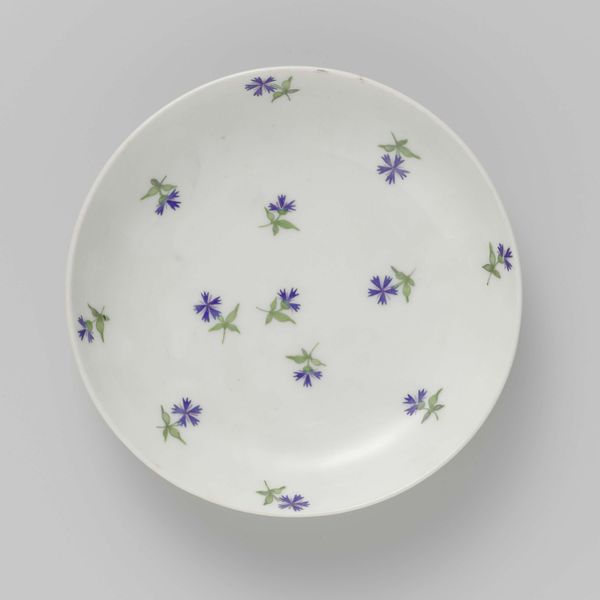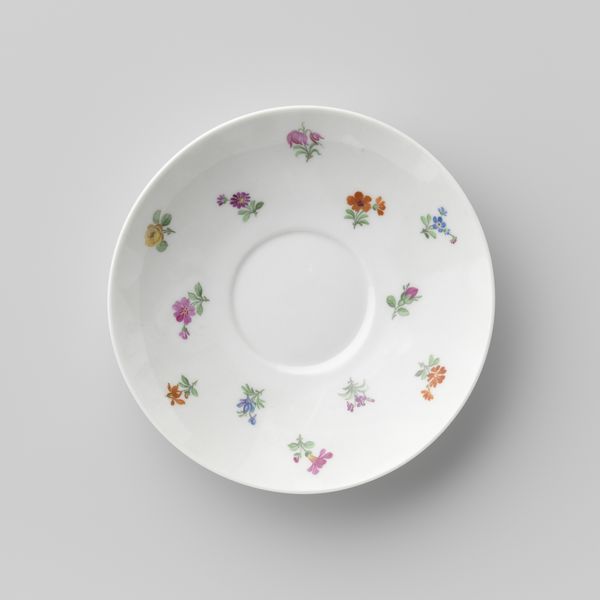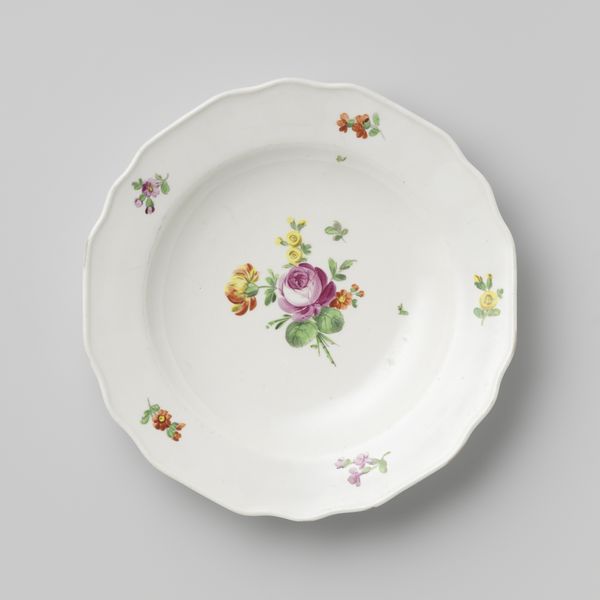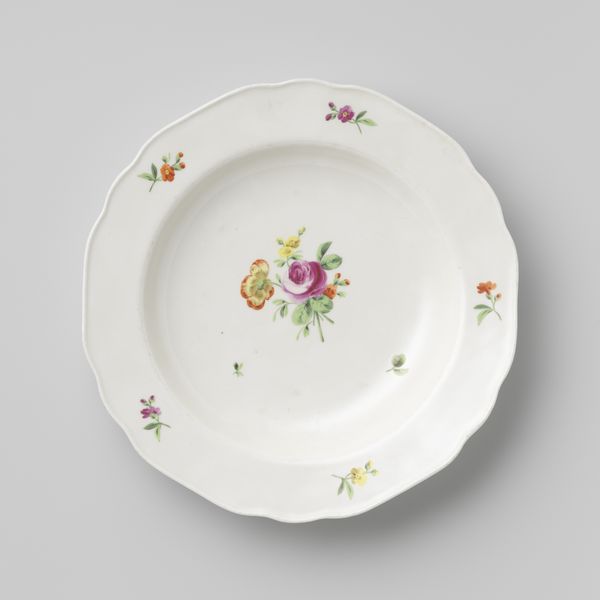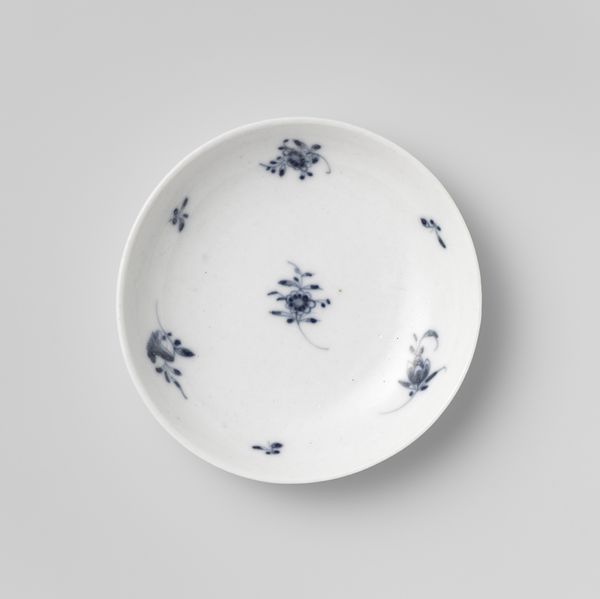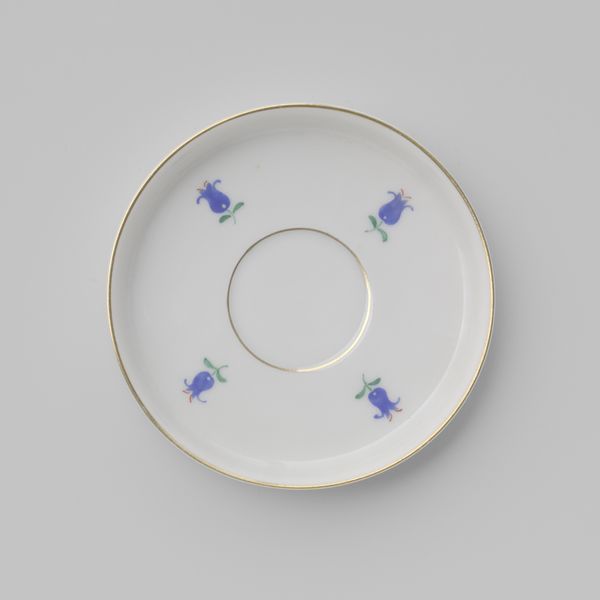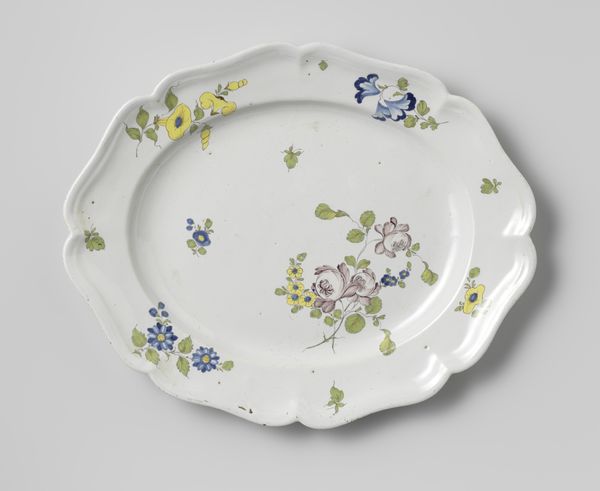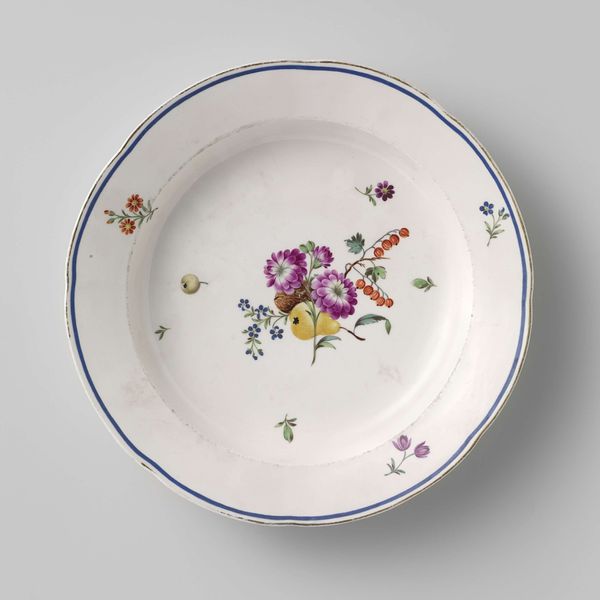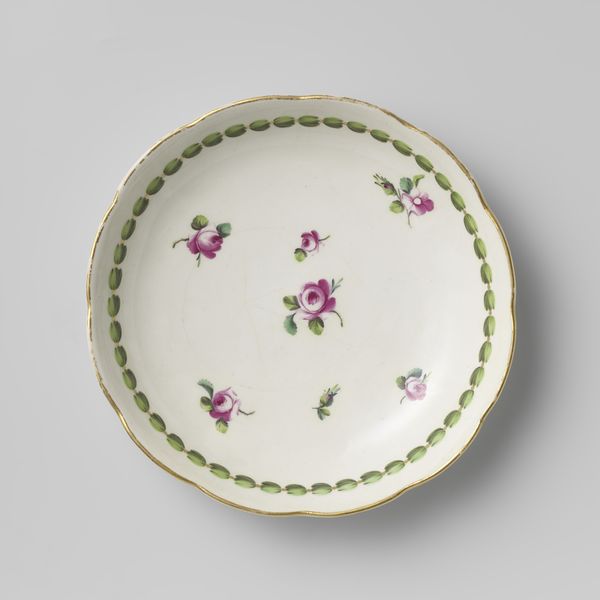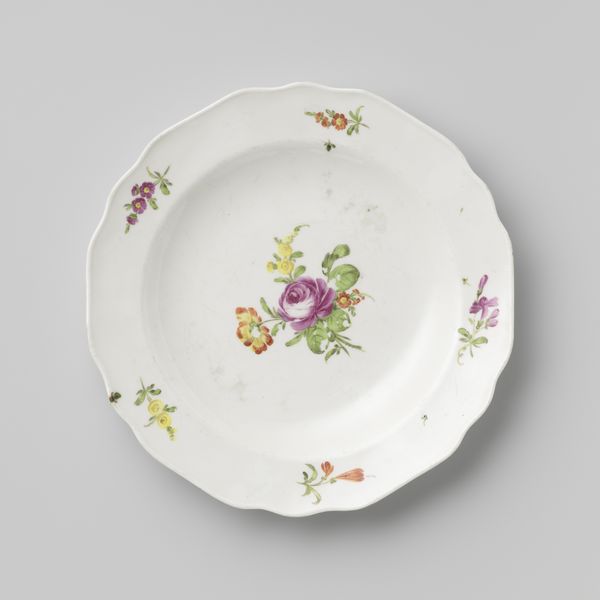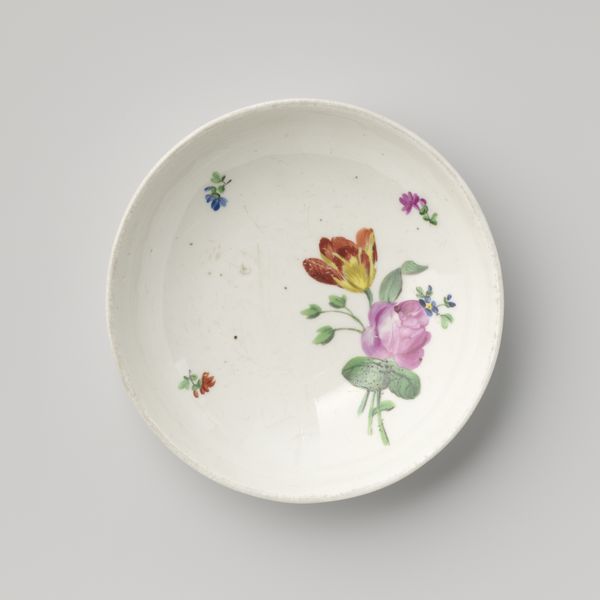
painting, ceramic
#
painting
#
ceramic
#
ceramic
Dimensions: diameter 13.1 cm, height 2.4 cm
Copyright: Rijks Museum: Open Domain
Editor: So, this is a plate, painted with cornflowers, made around 1784 by the Loosdrecht factory. It’s deceptively simple; the delicate flowers scattered on the stark white ceramic seem almost… innocent. What’s your take? Curator: It’s easy to see this plate as purely decorative, but in its time, the production of ceramics like this spoke volumes about social status and the burgeoning Dutch economy. Do you think everyone had access to a delicately painted piece of porcelain like this? Editor: I imagine not. Pottery wasn't always prized as art but how did class affect ceramic's cultural impact? Curator: Precisely. Loosdrecht porcelain factories arose to meet the demand for luxury goods from an emerging middle class eager to emulate aristocratic tastes. The choice of cornflowers isn't arbitrary either. While seemingly innocuous, such imagery participates in the broader politics of imagery that shape even the seemingly apolitical arts. Editor: Politics even on a plate? How would this image engage the viewer? Curator: Consider who controlled the production and consumption of such items, and the visual language promoted values of domesticity and nature, reassuring and subtly shaping societal views. How do you think these images helped? Editor: So the art plays a role beyond aesthetics in a society’s power structures… I will consider such details and their potential impacts going forward. Thank you. Curator: A vital insight for art and its effect! It can completely shift how we read seemingly quaint and precious art like this.
Comments
No comments
Be the first to comment and join the conversation on the ultimate creative platform.

